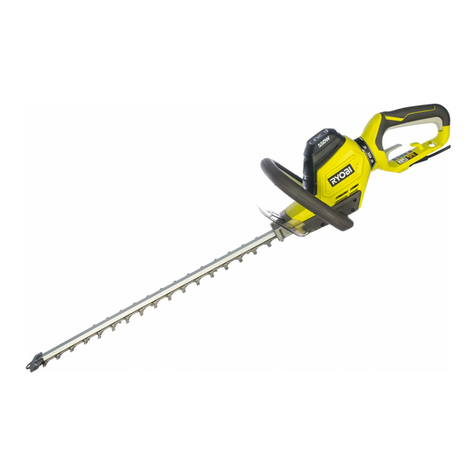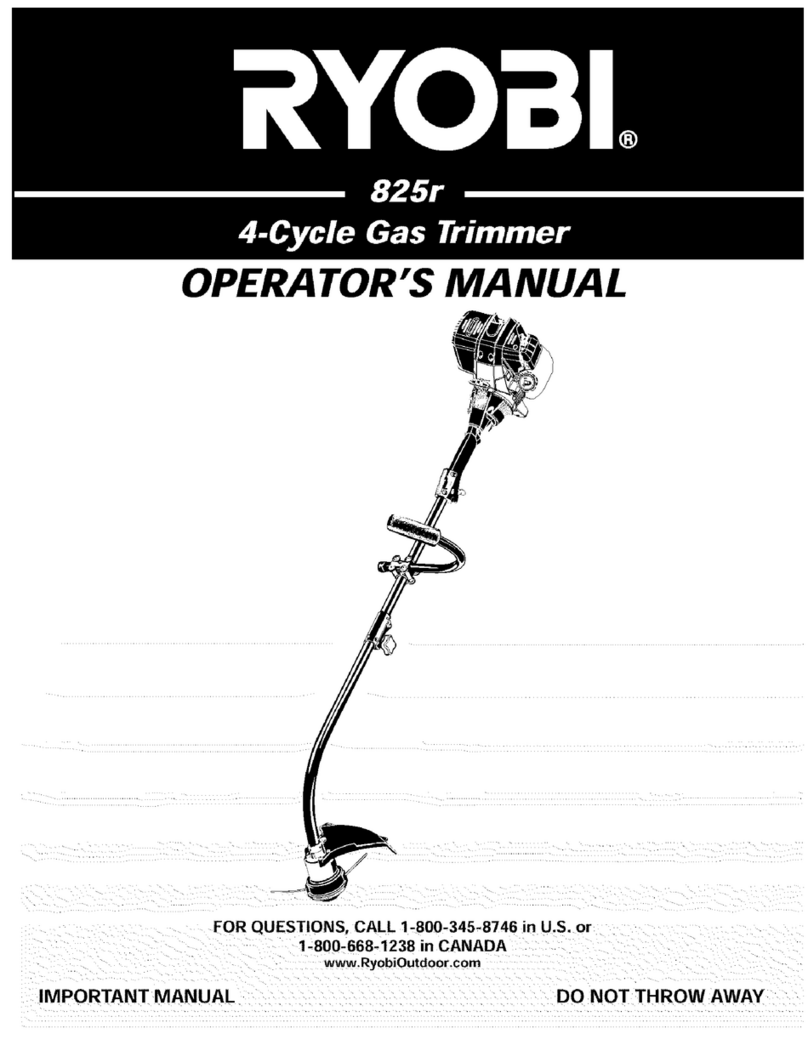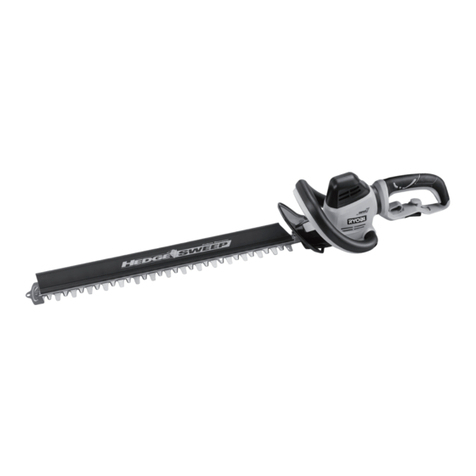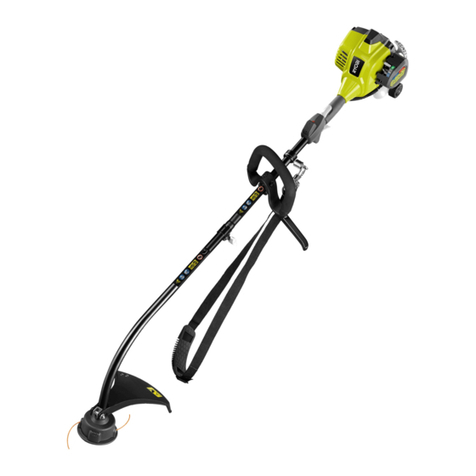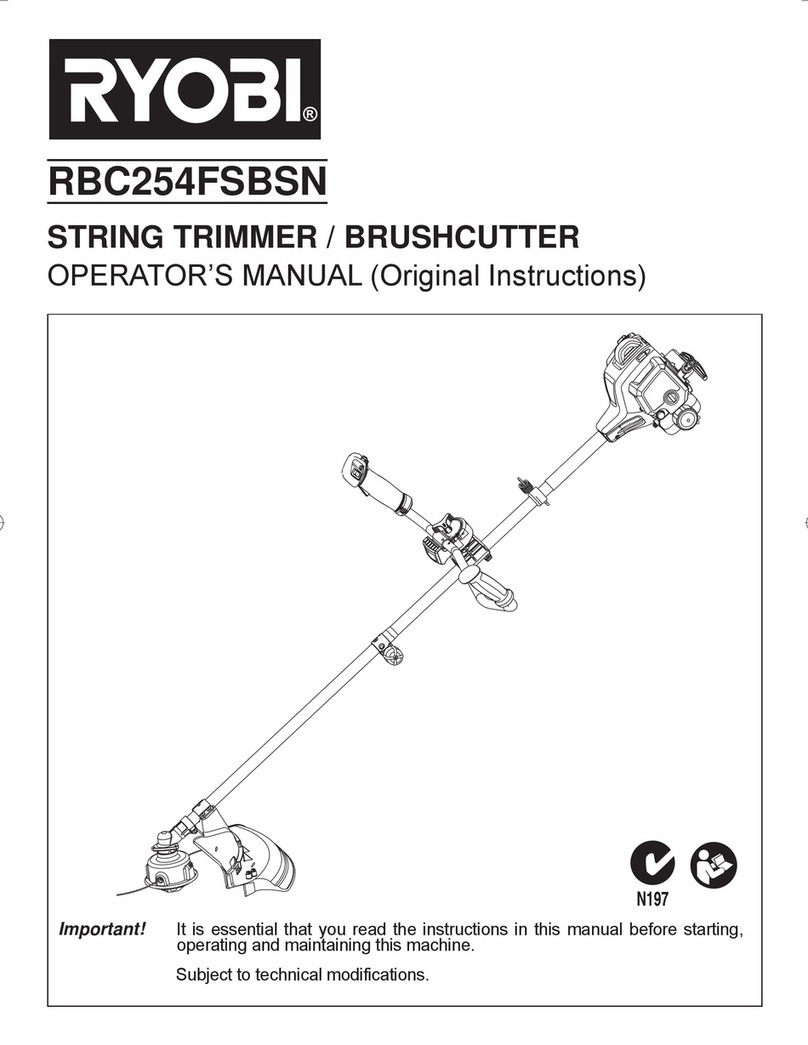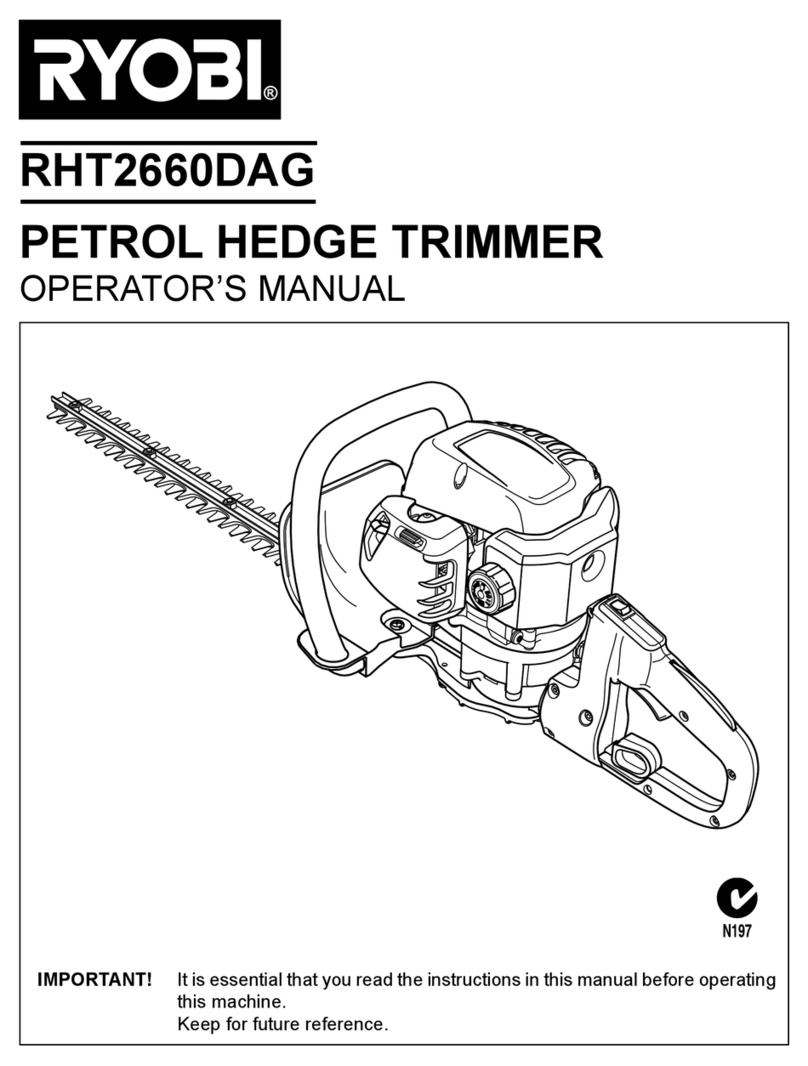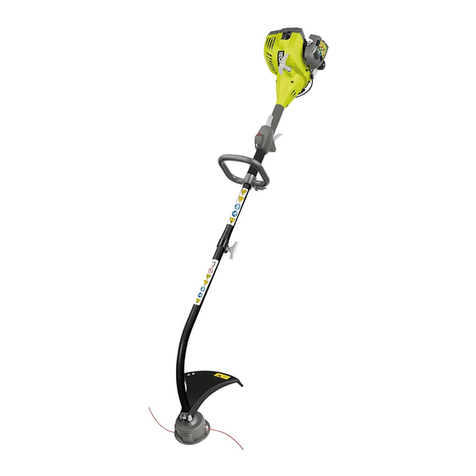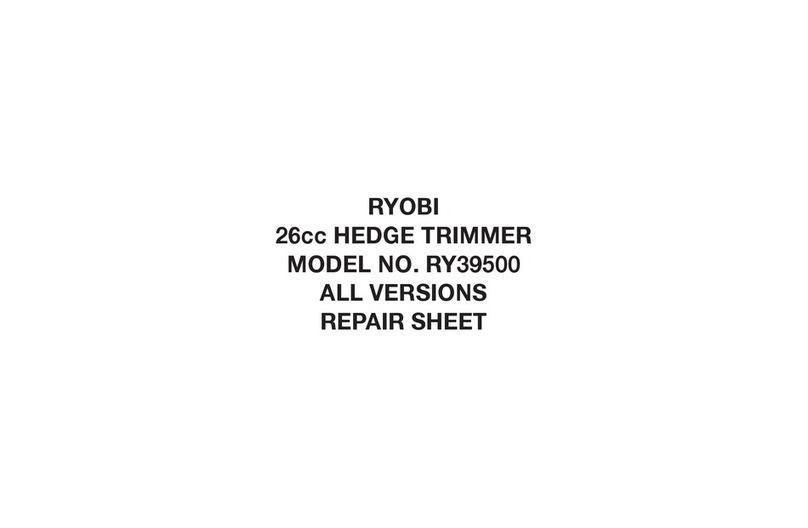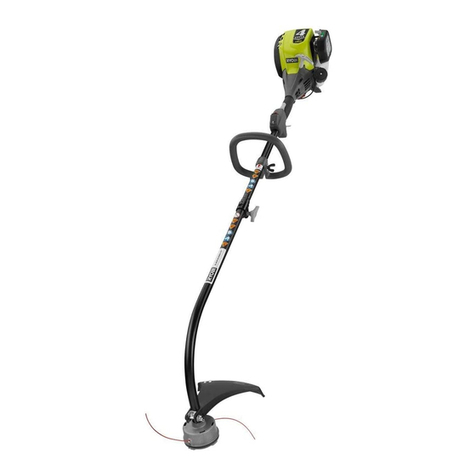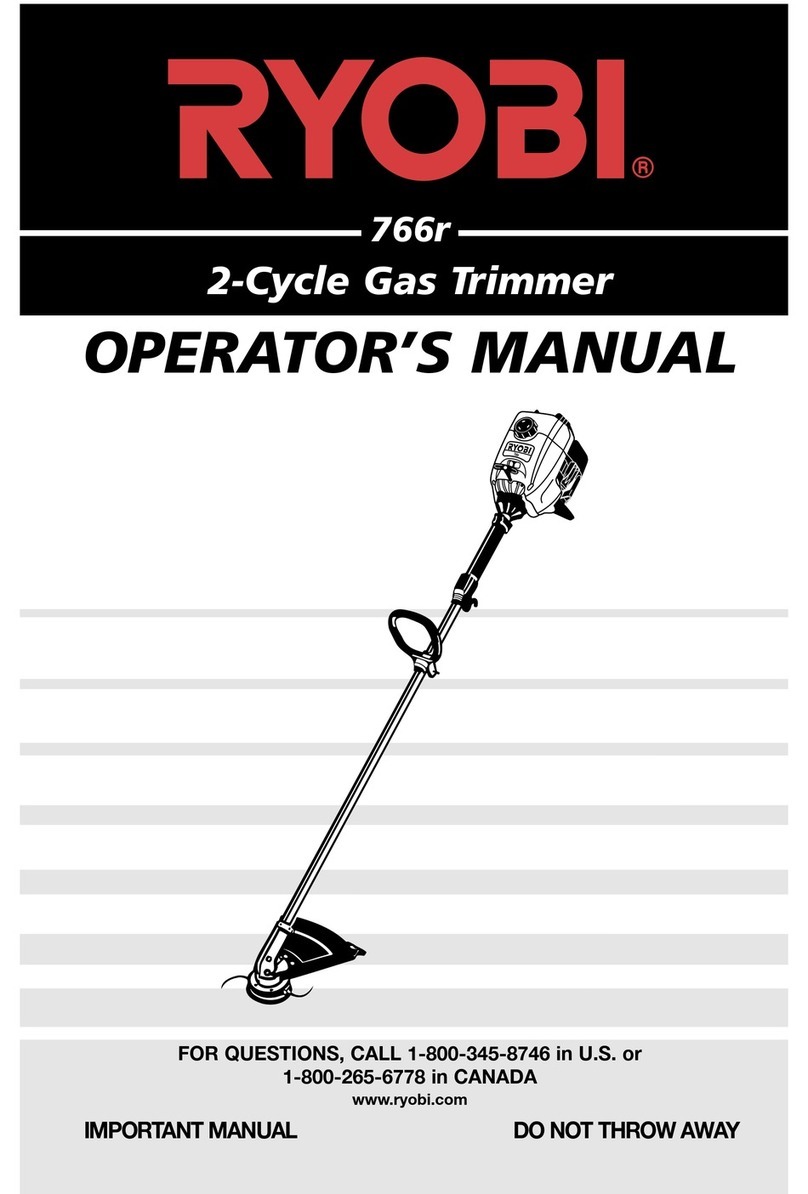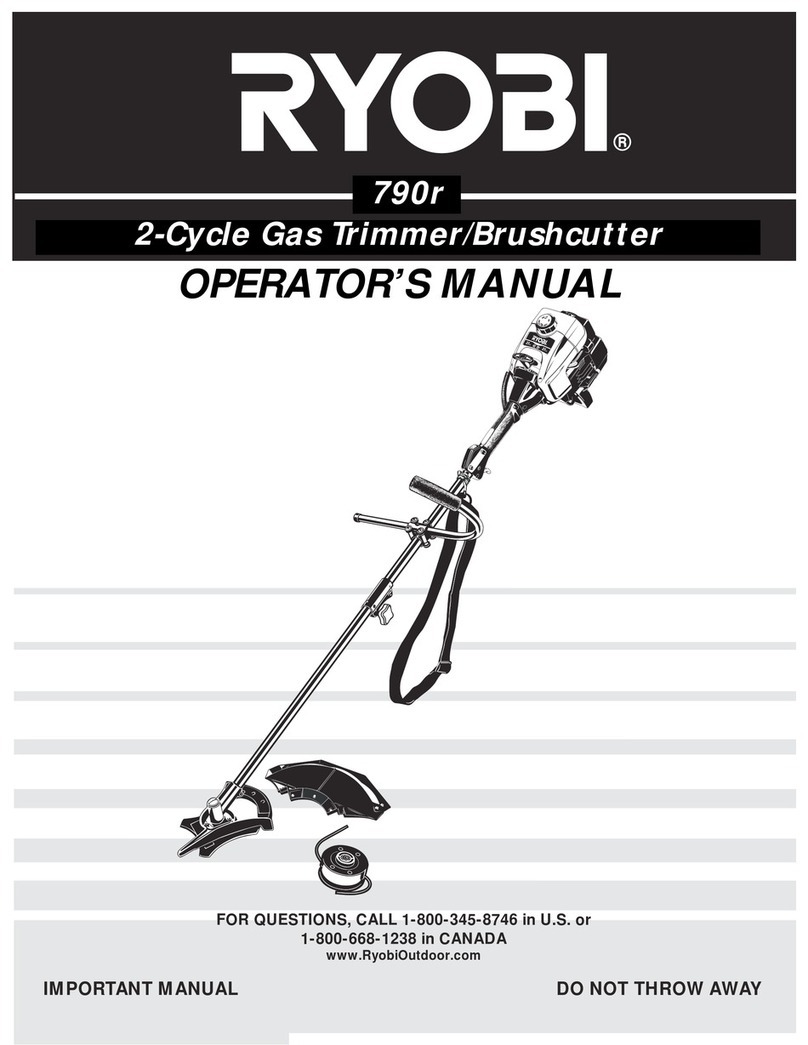1
ENGLISH (Original Instructions)
WARNING
Read and understand all instructions. Failure
to follow all instructions listed below, may result
in electric shock, fire and/or serious personal
injury. This attachment is suitable for use with
petrol power heads ONLY.
SAVE THESE INSTRUCTIONS.
GENERAL SAFETY RULES
■ For safe operation, read and understand all
instructions before using the attachment. Follow
all safety instructions. Failure to follow all safety
instructions listed below, can result in serious
personal injury.
■ Do not allow children or untrained individuals to use
this unit.
■ Wear safety glasses or goggles and hearing
protection when operating this unit, in accordance
with EN 166.
■ Wear heavy long trousers, boots, and gloves. Do not
wear loose fitting clothing, shorts, jewelry of any kind,
or go barefoot.
■ Clear the work area before each use. Remove all
objects such as rocks, broken glass, nails, wire, or
string which can be thrown or become entangled in
the line head or blade.
■ Secure long hair so it is above shoulder level to
prevent entanglement in any moving parts.
■ Keep all bystanders, children, and pets at least 15 m
away.
■ Do not operate this unit when you are tired, ill, or
under the influence of alcohol, drugs, or medication.
■ Do not operate in poor lighting.
■ Keep firm footing and balance. Do not overreach.
Overreaching can result in loss of balance or
exposure to hot surfaces.
■ Keep all parts of your body away from any moving
part.
■ Do not touch areas around the silencer or engine of
the power head, these parts get hot from operation.
Failure to do so could result in possible serious
personal injury.
■ Always stop the engine and remove the spark plug
wire before refuelling, cleaning, maintenance or
storage except for carburetor adjustments.
■ Inspect unit before each use for loose fasteners,
damaged or missing parts. Correct before using the
attachment. Failure to do so can cause serious injury.
■ Check for damaged parts. Before further use of
the appliance, any part that is damaged should be
carefully checked to determine that it will operate
properly and perform its intended function. Check
for alignment of moving parts, binding of moving
parts, breakage of parts, mounting, and any other
conditions that may affect its operation. A guard
or other part that is damaged should be properly
repaired or replaced by an authorised service center.
■ Use only original manufacturer’s replacement parts.
Failure to do so, may cause poor performance,
possible injury, and will void your warranty.
■ Do not, under any circumstance, use any attachment
or accessory on this product which was not provided
with the product or identified as appropriate for use
with this product in the Operator’s Manual.
■ It has been reported that vibrations from hand-held
tools may contribute to a condition called Raynaud’s
Syndrome in certain individuals. Symptoms may
include tingling, numbness and blanching of the
fingers, usually apparent upon exposure to cold.
Hereditary factors, exposure to cold and dampness,
diet, smoking and work practices are all thought to
contribute to the development of these symptoms. It
is presently unknown what, if any, vibrations or extent
of exposure may contribute to the condition. There
are measures that can be taken by the operator to
possibly reduce the effects of vibration:
a) Keep your body warm in cold weather. When operating
the unit wear gloves to keep the hands and wrists
warm. It is reported that cold weather is a major factor
contributing to Raynaud’s Syndrome.
b) After each period of operation, exercise to increase
blood circulation.
c) Take frequent work breaks. Limit the amount of
exposure per day.
■ If you experience any of the symptoms of this
condition, immediately discontinue use and see your
physician about these symptoms.
WARNING
The product is not intended for use by persons
(including children) with reduced physical, sensory
or mental capabilities, or lack of experience and
knowledge, unless they have been given supervision
or instruction concerning use of the product by a person
responsible for their safety.
Children should be supervised to ensure that they do
not play with the product.
SPECIFIC SAFETY RULES FOR
BRUSHCUTTER AND BLADE USE
■ After engine stops, keep rotating blade in heavy
grass or pulpy weeds until it stops.
■ Do not operate the brush cutter unless the blade
guard is firmly secured in place and in good condition.
■ Use heavy gloves while installing or removing blades.



